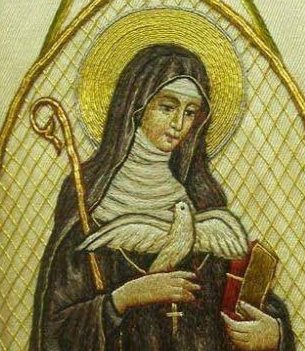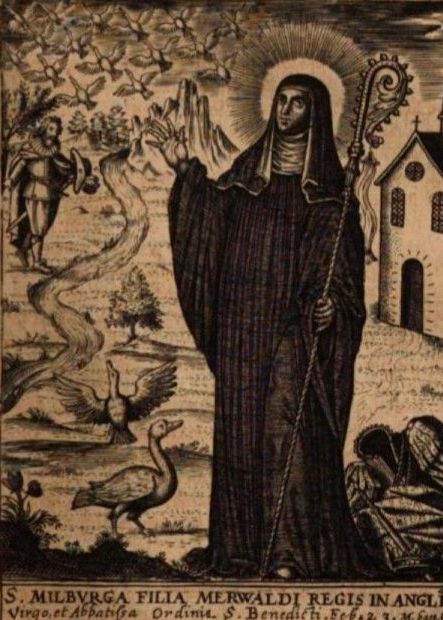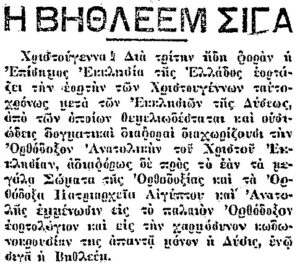Saint Milburga Abbess of Wenlock Priory

Saint Mildburh (alternatively Milburga or Milburgh) (+23 February 727) was the abbess of Wenlock Priory. Her feast day is 23 February.
Mildburh was a daughter of Merewalh, King of the Mercian sub-kingdom of Magonsaete, and Domne Eafe. She was the older sister of Saint Mildrith and Saint Mildgytha. The three sisters have been likened to the three theological virtues: Milburh to faith, Mildgytha to hope, and Mildrith to charity.

Mildburh was sought in marriage by a neighboring prince, who resolved to have her for his wife, even at the cost of violence. Mildburh’s escape took her across a river. The prince, in hot pursuit, was forced to desist when the river miraculously became so swollen that he was unable to ford.
Mildburh entered the Convent of Wenlock, Shropshire (now known as Much Wenlock). The nunnery was founded with endowments by her father and her uncle, Wulfhere of Mercia, under the direction of a French Abbess, Liobinde of Chelles. Milburga eventually succeeded her in this office and was installed as abbess by St . Theodore.
Educated in France, Mildburh was noted for her humility, and, according to popular stories, was endowed with the gift of healing and restored sight to the blind. She organised the evangelization and pastoral care of south Shropshire.
She is said to have had a mysterious power over birds; they would avoid damaging the local crops when she asked them to. She was also associated with miracles, such as the creation of a spring and the miraculous growth of barley. One story relates that one morning she overslept and woke to find the sun shining on her. Her veil slipped but instead of falling to the ground was suspended on a sunbeam until she collected it.
Her feast day is the day on which she fell asleep in the Lord – February 23. Her tomb was long venerated until her abbey was destroyed by invading Danes.






